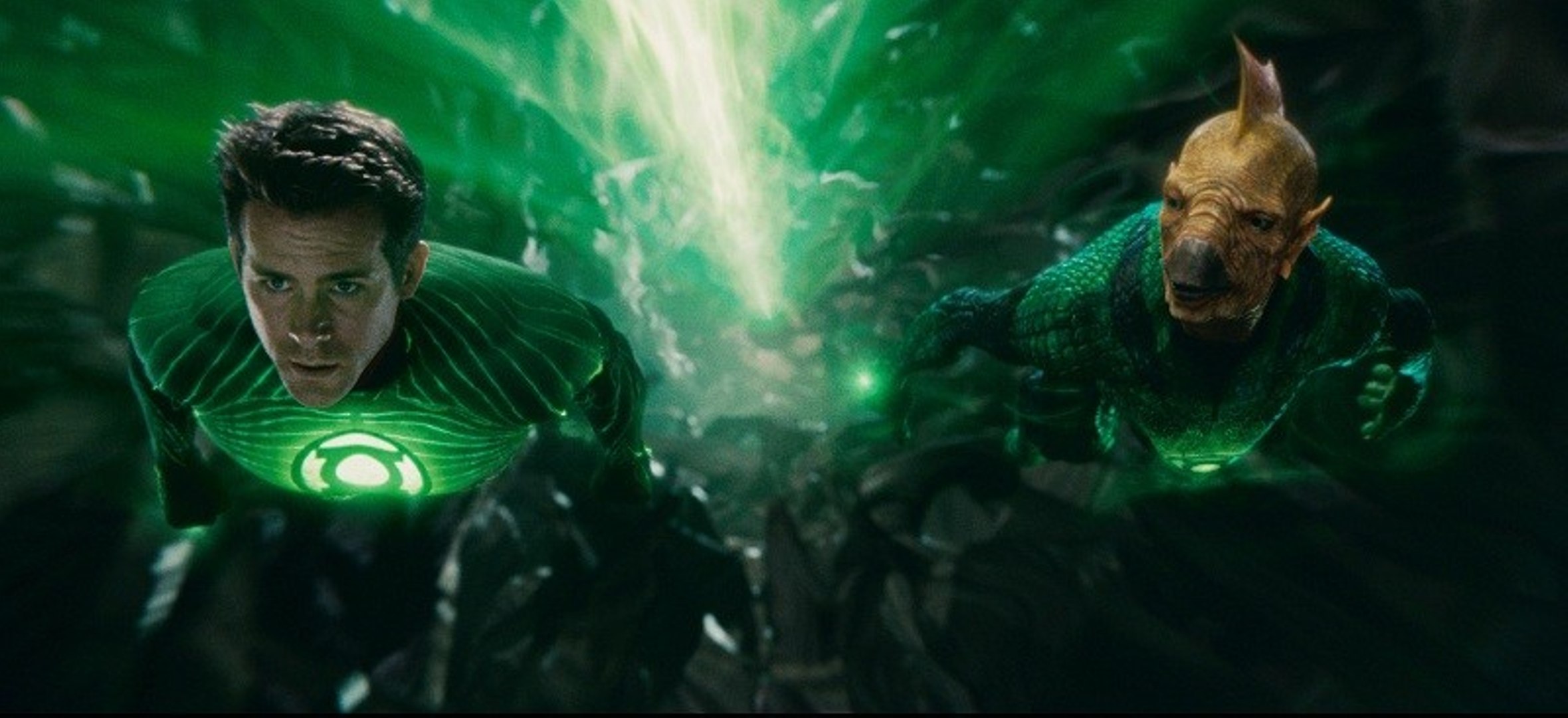Review: Green Lantern (2011)
Green Lantern, Warner/DC’s first big cinematic venture away from Superman or Batman, tells the story of earthling Hal Jordan’s (Ryan Reynolds) initiation into the ranks of the Green Lantern Corps, a team of intergalactic super police who maintain peace and justice in the universe (sort of like Jedi, but with power rings instead of the Force). Naturally, Hal battles a great and powerful evil that threatens our planet and countless others. Too bad for DC, though: their expensive superhero space opera is a pretty mediocre product. The film lacks evidence of a steady guiding hand behind it, which is unfortunate considering that Martin Campbell directed it. Campbell is no auteur, but he is a very capable journeyman director, having helmed The Mask of Zorro (1998), a thoroughly enjoyable adventure, as well as one of the best action pictures of the past decade, Casino Royale (2006). Despite Campbell’s past successes, there is little unity to Green Lantern, and those intentions that are discernable seem at conflict with one another. For example, the tone of the film is uneven, as if the filmmakers could not decide which popular superhero movie they were trying to emulate. The film alternates between attempts at the jaunty fun of Iron Man and the brooding solemnity of Batman Begins. More often it achieves neither. Perhaps some of the blame lies with the pack of screenwriters who assembled the script. Seldom, it seems, is a superhero movie the product of only a couple of writers working together.
Green Lantern fails to generate much excitement, emotion, or lasting interest. This is the result of several factors, the most significant being the unrealistic computer animation present throughout the movie. Even Hal Jordan’s Green Lantern suit is computer generated, and we can easily tell. Likewise, the objects Hal conjures with his power ring look and function like cartoons. Generating a glowing green racetrack to save a crashing helicopter is silly! The unconvincing computer effects only make the routine climax, complete with screaming crowds running through nondescript city streets, even more boring. Parallax, the great evil that threatens the universe, who Hal Jordan must vanquish, looks like a cosmic octopus made of smoke and excrement. What’s more, Parallax, who is more like a concept than a real character, is far less interesting than the transformed human villain, Hector Hammond (Peter Sarsgaard). Hector’s nerdish evil makes a nice foil to Hal’s jockish heroics. Sadly, Hector is underdeveloped and too easily disposed of. Actually, in the end Parallax is defeated pretty easily too, once Hal overcomes the fear that limits his willpower.
The film makes the abstract concepts of Will and Fear concrete things. The Green Lanterns’ rings are powered by Will energy, and the evil Parallax feeds on Fear. The colour of Will is green, apparently, and Fear is yellow (an odd choice, I know). Needless to the say, the themes are explicit.
Despite all of its flaws, Green Lantern at least strives for some complexity by having the brash Hal Jordan secretly beset with inward fear. Though this idea is never adequately explored, simpler films would have made Hal either fearless or brash, but here the filmmakers touch upon a truth. How much of our self-confidence is merely posturing meant to hide our hidden fears?
4 out of 10
Green Lantern (USA, 2011)
Directed by Martin Campbell; screenplay by Greg Berlanti & Michael Green & Marc Guggenheim and Michael Goldenberg; starring Ryan Reynolds, Blake Lively, Peter Sarsgaard, and Mark Strong.
